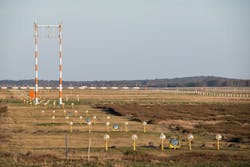'Runway Status Lights' now fully operational
WASHINGTON - The Federal Aviation Administration (FAA) announced that Runway Status Lights (RWSL), the first technology to provide direct warning to pilots about potential runway conflicts, is now operational at all 20 sites approved to receive the ground-breaking technology.
A report on the effectiveness of RWSL at the where it was operational in 2017 found an overall 52% reduction in the average runway incursion rate, with 15,484 potential saves by the technology.
The FAA developed RWSL technology to increase situational awareness for flight crews and airport vehicle drivers, providing an added layer of runway safety. The technology alerts pilots and vehicle operators to stop when runways and taxiways are not safe to enter, cross or begin takeoff. Red lights embedded in the pavement illuminate when the presence of other traffic creates a potential conflict. RWSL uses the airport’s surface surveillance system to determine the location of aircraft and vehicles. The lights are fully automated, requiring no input from air traffic controllers.
Pilots and ground vehicle operators must still receive clearances from controllers for any operation on runways or taxiways.
The RWSL system is comprised of two types of lights. Runway Entrance Lights (REL) are deployed at taxiway and runway crossings and illuminate if it is unsafe to enter or cross a runway. Takeoff Hold Lights (THL) are deployed in the runway by the departure hold zone and illuminate when there is an aircraft in position for departure and the runway is occupied by another aircraft or vehicle and is unsafe for takeoff.
For a full list of the airports that are operating RWSLs, please visit this link from the FAA.
